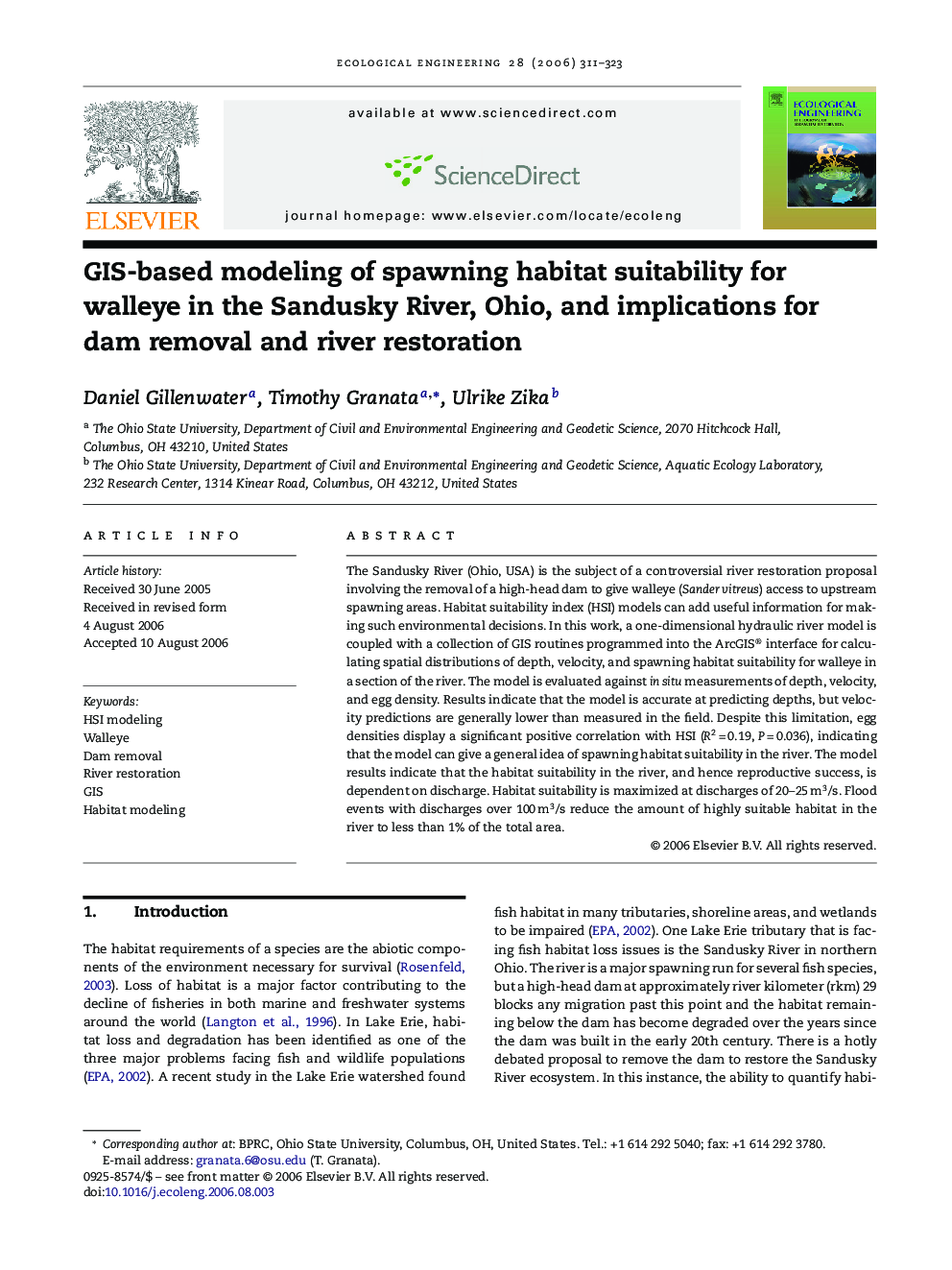| Article ID | Journal | Published Year | Pages | File Type |
|---|---|---|---|---|
| 4391165 | Ecological Engineering | 2006 | 13 Pages |
The Sandusky River (Ohio, USA) is the subject of a controversial river restoration proposal involving the removal of a high-head dam to give walleye (Sander vitreus) access to upstream spawning areas. Habitat suitability index (HSI) models can add useful information for making such environmental decisions. In this work, a one-dimensional hydraulic river model is coupled with a collection of GIS routines programmed into the ArcGIS® interface for calculating spatial distributions of depth, velocity, and spawning habitat suitability for walleye in a section of the river. The model is evaluated against in situ measurements of depth, velocity, and egg density. Results indicate that the model is accurate at predicting depths, but velocity predictions are generally lower than measured in the field. Despite this limitation, egg densities display a significant positive correlation with HSI (R2 = 0.19, P = 0.036), indicating that the model can give a general idea of spawning habitat suitability in the river. The model results indicate that the habitat suitability in the river, and hence reproductive success, is dependent on discharge. Habitat suitability is maximized at discharges of 20–25 m3/s. Flood events with discharges over 100 m3/s reduce the amount of highly suitable habitat in the river to less than 1% of the total area.
